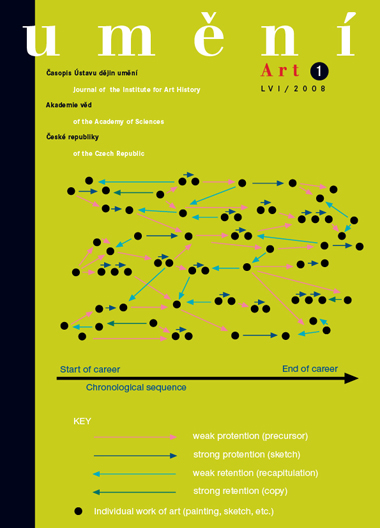Milena Bartlová
Habituální performance. Úvahy o možnostech metodologické inspirace pro uměleckohistorickou medievistiku
The difficulties that art history is confronted with when working with medieval material are caused by its alterity. Medieval art differs from modern art in terms of the concept of authorship, its role in the public life of society, its ontological status, and its setting in a residual oral culture. The attempt to surmount this difficulty through formalism combined with iconography (iconology) seems inadequate today. The text gives a brief description of the socio-political inclusion of art-historical formalism in post-war Germany and Communist Czechoslovakia. The essentialist theory of style determines the specific medievalist approach to formalism. Post-modern theory has surprising links to medieval thought. It is no accident that a number of top post-modern theorists originally trained as medievalists. The author proposes enriching the instruments of medieval art history with the categories 'field' and 'habitus' (from Pierre Bourdieu) and 'performance' and 'agency' (from Alfred Gell). The concept of habitus specifies for medievalist use the classic, paradigmatic category of art history - style. It covers not just visually perceived form (body posture) but also the organisation of work, social status and the customary communication between those involved, cash flows, the technical means employed, concern about the audience, etc. The concept of the 'field of the image' encompasses not just the painting or the statue itself but also the artists, their inspirational models and teachers, conceptors, and commissioning parties, the audience, financial resources, materials, the practical functions of the image, responses, its movement through the modern art market, its function in the museum, and the painting's instrumentalisation as an illustration or incarnation of national identity. The concept of agent and activity according to Gell can effectively be used to obtain a theoretical understanding of numerous surviving reports of images that 'miraculously' acted and moved, , and for which modern thought lacks a suitable instrument. The study closes with a discussion of the new concepts of presence and absence relating to the figures portrayed in Byzantine icons.
Full-text in the Digital Library of the Czech Academy of Sciences:
https://kramerius.lib.cas.cz/uuid/uuid:8d0b249e-5d2f-e682-d007-1122fdfebdd4
< back

